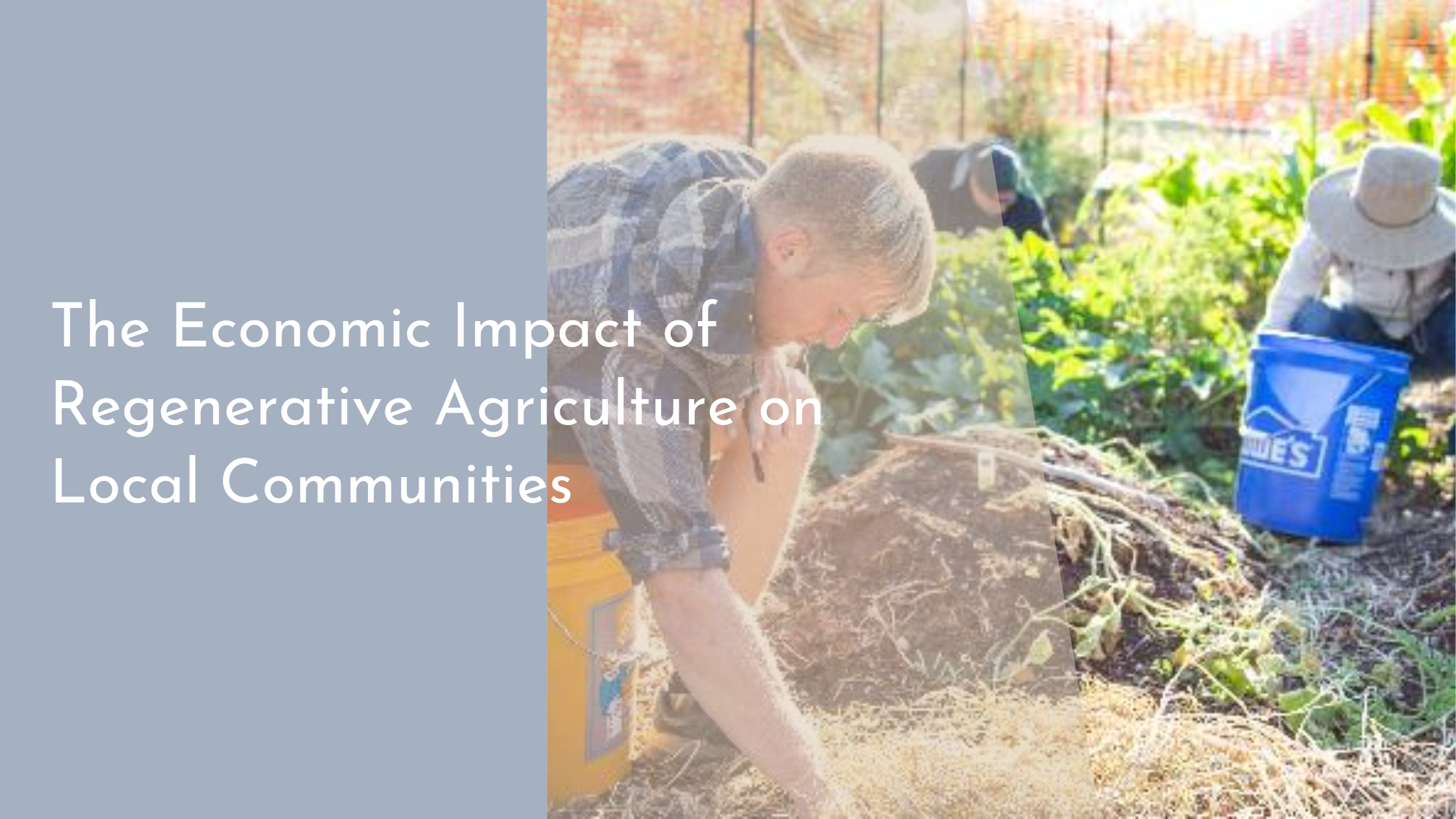The Economic Impact of Regenerative Agriculture on Local Communities
In recent years, regenerative agriculture has emerged as a promising approach to farming that not only aims to restore soil health but also to enhance the economic vitality of local communities. As farmers and policymakers increasingly recognize the potential of this sustainable practice, it’s essential to explore its economic impact, environmental merits, and the challenges that come with its implementation. In this article, we’ll delve into how regenerative agriculture is transforming local economies, its broader contributions to society and the environment, and the opportunities that lie ahead.
Introduction to Regenerative Agriculture
Regenerative agriculture is a system of farming principles and practices that seeks to rehabilitate and enhance the entire ecosystem of the farm by placing a strong emphasis on soil health. Unlike conventional agricultural practices, which often degrade the land, regenerative methods focus on restoring soil fertility, increasing biodiversity, and improving the water cycle. Techniques such as cover cropping, reduced tillage, and rotational grazing are employed to build resilience in the farm ecosystem, leading to long-term sustainability.
This innovative approach is gaining traction across the globe due to its holistic benefits. Farmers are increasingly adopting regenerative practices as they face challenges like climatic unpredictability and soil degradation. By nurturing the land, regenerative agriculture not only boosts productivity but also contributes to a healthier environment. The movement is being driven by both grassroots initiatives and policy support, with an emphasis on collaborative research and knowledge sharing among farmers, scientists, and agricultural organizations.
Benefits for Local Economies
Regenerative agriculture offers a multitude of benefits for local economies, starting with increased job opportunities. By its very nature, regenerative agriculture is labor-intensive, involving a variety of tasks from managing diverse crop rotations to implementing sophisticated soil health practices. This demand for skilled labor can lead to the creation of new jobs in rural areas, which are often plagued by high unemployment rates. As local economies strengthen with new employment opportunities, the ripple effects can lead to increased economic activity and improved standards of living.
Moreover, regenerative agriculture can enhance the profitability of local farms. By improving soil health, farmers can achieve higher yields and better quality crops without relying heavily on expensive chemical inputs. This reduction in input costs, coupled with potential premiums from selling organic or sustainably produced products, can lead to improved financial stability for farmers. As farmers prosper, they can invest more in their local communities, supporting local businesses and contributing to the community’s overall economic growth.
Environmental and Social Contributions
The environmental contributions of regenerative agriculture are profound, with significant implications for biodiversity and climate change mitigation. By promoting practices that improve soil structure and increase organic matter, regenerative agriculture helps sequester carbon from the atmosphere, playing a crucial role in combating global warming. Furthermore, these practices foster a diverse ecosystem both above and below the ground, supporting a wide range of plant and animal life and enhancing the resilience of the agriculture system to pests and diseases.
Beyond environmental benefits, regenerative agriculture also offers substantial social contributions. It fosters community resilience by encouraging local food systems and promoting food security. By prioritizing local and diverse food production, communities can reduce their dependence on imported goods and become more self-sufficient. Additionally, regenerative agriculture supports traditional knowledge and practices, encouraging cultural preservation and community engagement. As communities become more involved in sustainable practices, they can strengthen social ties and build a collective commitment to environmental stewardship.
Challenges and Opportunities Ahead
Despite its numerous benefits, the transition to regenerative agriculture is not without its challenges. One major hurdle is the initial cost and investment required to shift from conventional to regenerative practices. Farmers may face financial constraints in acquiring necessary equipment or retraining labor to implement new methods. Additionally, there may be a lack of technical support and guidance, making it difficult for farmers to navigate the transition successfully. Overcoming these challenges requires collaborative efforts from governments, educational institutions, and agricultural organizations to provide necessary resources and support.
However, these challenges also present unique opportunities for growth and innovation. As awareness of regenerative agriculture increases, so too does the potential for technological advancements and policy development tailored to support these practices. Increased investment in research and development can lead to innovations that make regenerative practices more accessible and cost-effective. Furthermore, as consumer demand for sustainably produced goods rises, there is potential for new market opportunities and partnerships. By embracing these opportunities, regenerative agriculture can continue to evolve and expand its positive impact on local communities.
The economic impact of regenerative agriculture on local communities is an inspiring narrative of growth, sustainability, and resilience. By fostering job creation, enhancing farm profitability, and contributing to environmental and social well-being, regenerative agriculture offers a pathway to revitalized local economies and communities. While challenges remain, the opportunities for innovation and widespread adoption are immense. As more communities embrace regenerative practices, the potential for creating sustainable and thriving local economies becomes increasingly achievable, promising a brighter future for farmers and their communities alike.

